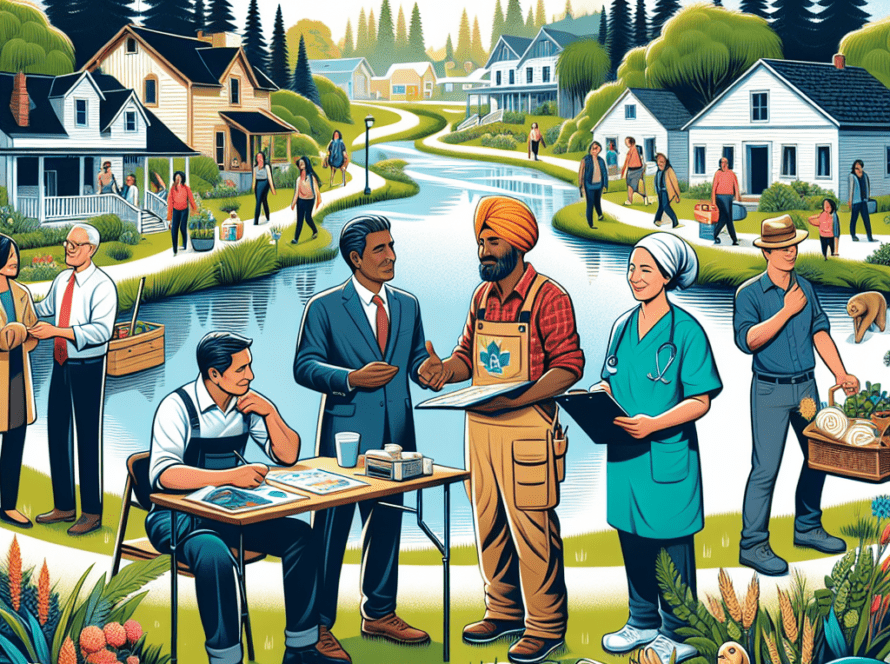Canada’s Spousal Open Work Permit: Eligible Jobs Revealed

Canada’s Spousal Open Work Permit (SOWP) Update: Key Changes and Implications for Foreign Workers’ Families
On January 14, 2025, the Canadian government announced significant updates to the Spousal Open Work Permit (SOWP) policy, which will now impose specific eligibility criteria based on the occupations of foreign workers. This change is particularly important for the spouses of foreign workers, as it establishes new boundaries regarding who can apply for a work permit in Canada.
Key Updates to the SOWP
-
Eligibility Criteria: Spouses can only apply for a SOWP if their partner is employed in designated occupations categorized under TEER (Training, Education, Experience, and Responsibilities) levels 0 and 1, along with select TEER 2 and TEER 3 roles. This marks a shift from the previous system where spouses could apply regardless of their partner’s occupation.
-
Work Permit Duration Requirement: The foreign worker must have a minimum of 16 months remaining on their work permit at the time of the SOWP application. This requirement aims to streamline the application process and ensure that spouses can work in Canada for a significant period.
- Preservation of Existing Permits: Importantly, the new rules do not retroactively affect previously approved SOWP applications or renewals, providing some stability for those who have already navigated the process.
Eligible TEER Occupations
The list of eligible occupations includes a diverse range of fields, ensuring that many skilled workers’ families can benefit. Notable categories include:
- Technical Occupations Related to Natural and Applied Sciences: Such as Aircraft Instrument Mechanics and Electrical Engineering Technologists.
- Health Sector Occupations: Including Licensed Practical Nurses and Medical Laboratory Technologists.
- Public Protection Services: Encompassing Early Childhood Educators and specialized military roles.
- Technical and General Trades: Covering Electricians and Transport Truck Drivers.
This broad spectrum indicates the Canadian government’s intent to attract a variety of skilled professionals, enhancing the labor market while supporting the family units tied to these workers.
Application Process Overview
For spouses looking to apply for a SOWP, the process involves the following steps:
- Eligibility Questionnaire: Applicants begin by completing an online questionnaire provided by Immigration, Refugees, and Citizenship Canada (IRCC).
- Document Preparation: Key documents include proof of relationship, evidence of the foreign worker’s employment in an eligible occupation, and confirmation of the work permit’s validity.
- Online Submission: Applications are submitted through the IRCC secure portal, where all documents are uploaded and fees are paid.
- Processing Wait: Processing times can vary based on location, so applicants are encouraged to plan accordingly.
Insightful Analysis
These updates reflect Canada’s ongoing commitment to facilitating family unity while maintaining a focus on skilled labor needs. By narrowing the eligibility criteria, the government aims to ensure that the SOWP serves not just as a way for spouses to gain employment, but as a tool to attract and retain talent in critical sectors.
However, this move could create challenges for families where the foreign worker’s occupation does not fit within the newly defined parameters. Families may face difficult decisions about relocation or employment opportunities, potentially impacting their experiences in Canada.
Ultimately, while the updates to the SOWP may streamline certain processes and enhance the workforce’s skill alignment, they also underscore the need for continuous dialogue and policy evolution to accommodate the diverse realities of foreign workers and their families in Canada.
For those interested in the latest developments regarding work permits and immigration policies, staying informed through reliable sources is essential as these regulations continue to evolve in 2025 and beyond.



